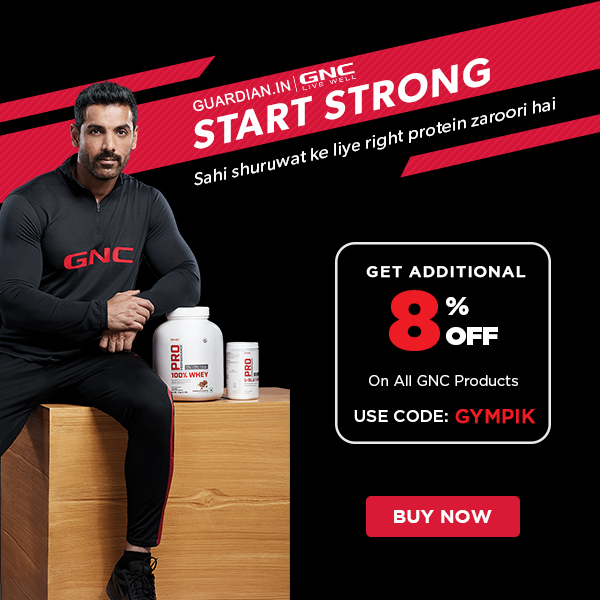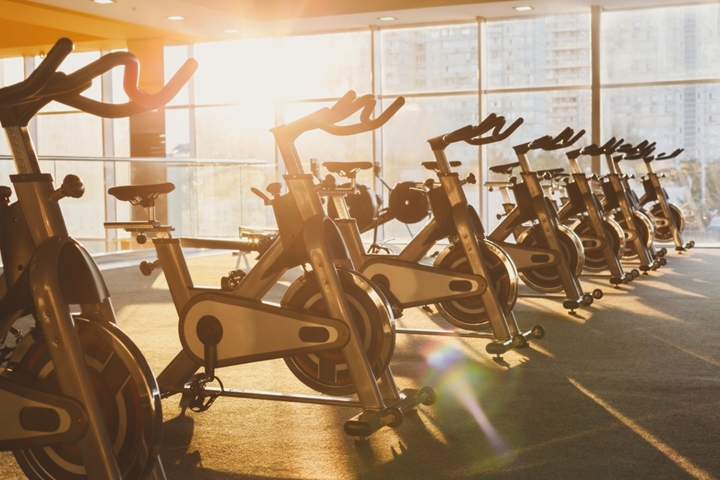So you’ve finally started training with weights? Great! You’re on the right track. There are a whole plethora of benefits of weight training, all of which we have covered in another article. Today, however, we shall address the most common question many lifters have – “Should I lift heavy with low reps or should I do more reps with lighter weight?”

After hours of painstaking research, including speaking to some of the foremost experts in fitness, stalking a dozen fitness gurus on Social Media and pouring hours over various reports, we finally have the answer for your question. Read on to find out.
What Are Reps & Sets?

Let’s start with the absolute basics, what are reps and what are sets in the context of weight training:
Reps – Reps or Repetitions is a term used to describe the number of times you have performed a particular exercise movement from start to end. Take, for example, the bicep curl. The starting position is with your palm gripping the dumbbell facing forward while the end position is when your biceps are fully contracted and dumbbells are at shoulder level. When one full exercise movement is completed, you will have completed one Rep.
Sets – A Set can be best described as a group of the number of repetitions performed for a workout. For example, if you have performed 12 bicep curls, then you would have completed one set of that particular workout. Most experts agree that increasing the number of sets is more beneficial when it comes to developing strength and muscle mass. The number of sets themselves varies depending on the strength training program. Generally, most workouts will be divided into 2-3 sets with 12 – 15 reps per set.
Muscle Hypertrophy – What is it and How Does it Occur?

Ever wondered how Kai Greene or Jay Cutler got those muscles? It’s not as if these people were born with bulging biceps and triceps! Well, behind those shredded looks is a short and sweet scientific term – Muscle Hypertrophy. While the term may sound super technical and thus scary, it has a very simple definition – Muscle growth due to the increase in the size of the muscle cells.
Now there are two essential components to achieve muscle hypertrophy – stimulation and repair. Every time you lift something heavy, your muscles contract. Repeated contraction causes micro-tears to the muscle fibre which are now ready to be repaired. This is called stimulation.
While you are busy inflicting “damage” to your muscle fibre, your body isn’t sitting idle. The body fights back by repairing and replacing the damaged muscle tissues and adding even more in order to reduce the damage. This process of muscle growth or hypertrophy occurs when your body is at rest.
Heavy Weights With Fewer Reps or Light Weights With Higher Reps…or Something Else?
Finally, the question everyone is waiting to be answered desperately. If only the answer were as simple and straightforward as saying this is better than that. Alas, as in everything related to human body, the answer to this question too doesn’t have a straightforward answer. While athletes and fitness enthusiasts around the world continue to be divided on this aspect, recent scientific studies suggest that there’s little to no difference between the gains made between the two techniques.

In fact, it turns out the true answer lies in the volume of your workout! So what is volume? Volume is basically the amount of work done during exercise. Here’s a simple formula to calculate the volume:
Volume = Sets X Reps X Weight
Still, have doubts? Let us illustrate with an example.
Say there are two bodybuilders, Ram and Shyam. Now Ram decides he would go heavy with less rep, so he workouts with 10Kg dumbbells for 3 sets with 8 reps per set. Similarly, Shyam decides that he would lift the lighter weight but with more reps so he workouts with 5Kg dumbbells for 3 sets with 15 reps per set. Now, by the above formula, here’s the volume of workout for both:
Volume for Ram = 3 (sets) x 8 (reps) x 10 Kg (weight) = 240
Volume for Shyam = 3 (sets) x 16 (reps) x 5 Kg (weight) = 240
Since the volume of work done by both Ram and Shyam remain the same, the gains in both the cases will be near identical.
“So Does This Mean I Don’t Ever Have To Lift Heavy At All?”
A good question young Padawan! While we have illustrated how there’s no difference between lifting heavy or lifting lightweight as long as the volume of work done is similar, it is time to introduce you to another little term in bodybuilding called Progressive Overload.
What Is Progressive Overload and Why Is It Important?

In the previous paragraph about muscle hypertrophy, we learnt about the body’s mechanism to repair damaged muscle fibres and tissues which induces muscle hypertrophy. However, if you continued lifting similar weight for a similar number of reps and sets, there will be a point in time when your body will adapt to the stress and as a result, you won’t make more gains.
Progressive Overload means that you are constantly pushing your body so that it cannot adapt to the same technique. This can be done by either increasing the number of sets or reps or weights. In fact, here’s a short story from Greek Mythology that demonstrates the effectiveness of progressive overload:
The Story of Milo of Croton
A long time ago, in the 6th century BC, there was a famous wrestler called Milo of Croton. A six-time Olympic champion, Milo was renowned to be one of the strongest men of his era with the honoured title of Periodonikes which basically translates into “multiple champions”.

The secret of his strength? It is said that Milo carried a newborn calf on his shoulders every day. He continued with this strange act for the next 4-years. With each passing year, the calf grew in size and weight. Instead of yielding to the challenge, Milo continued with this feat. By the end of these four years, the newborn calf had grown into a 4-year old bull and Milo had become so strong that he was able to lug a grown bull around on his shoulders.
This story acutely demonstrates how progressive overload can help you achieve your dream body.
Few More Factors That Affect Your Gains
Reps and Sets and Volume of workout are all good. But people often neglect the behind the scene routine which plays a key role in your body making the desired gains.
Adequate Sleep – As discussed already, your body starts repairing yourself only when your muscles are at rest. Which is why the amount and quality of your sleep plays a vital role in your body’s muscle growth. In fact, it is while you are sleeping that your body produces Growth Hormones and Testosterone, two of the most important hormones necessary for the body to repair itself.
Diet – A famous phrase popular among fitness enthusiasts and Nutritionists is “Abs are made in the kitchen”. What you eat and how you eat plays a vital role in your body’s ability to repair itself. Eat too much or eat the wrong thing and see your gains flush down the drain. A balanced diet is what you need to maximize hypertrophy. Enrolling a good dietitian can make a significant difference in your gains.
Consistency – If you are one of those people who pop into the gym once every 3-months, let’s spare you the effort right now and introduce you to a bitter pill of truth – this isn’t working! The key to building an awesome physique is consistency and discipline. Workout at least 5 to 6 times a week with dedication. Slowly you will start seeing the difference in your body.
Conclusion
While the world engages in the debate of higher weight or lower weight, science finally proved that neither matters as long as work done or volume is the same. We hope that this article has finally helped you discover the true path and take you one step closer to achieving your dream. Are there any more question you would like for us to answer? Leave a comment below!


 Traqade
Traqade































[…] Source link […]
Many novice athletes find it difficult to draw up a training plan: they cannot decide on the loads during classes and the number of repetitions. In fact, it is not that difficult – it all depends on the tasks set. Thanks for sharing, helpful material. I also want to start taking steroids http://www.samsonsteroidsuk.com, and I am interested in your opinion.
[…] Supply hyperlink […]
To begin with, we will determine what mass gain can be called sufficient. If you add about 700 grams per week, this is considered a normal pace. Focus on this number when you track the success of your classes. If you have set yourself serious goals for gaining mass, I also advise you to use massgainer
Looking to pursue health science courses ? Osh University provides a comprehensive range of programs, ensuring students receive a well-rounded education in this ever-evolving field.
Shalamar Hospital is a leading surgical hospital Lahore , committed to delivering exceptional surgical services and setting high standards for patient care.
Unleash your inner glamour with Jewel Galore’s earrings that shine like precious gems. From classic to contemporary, adorn yourself with elegance and brilliance.
This article reinforces the notion that theres no one size fits all approach in fitness. It is all about finding what works best for your body and staying committed to the journey.
Mobile Phone Repair in Stockton CA
Lift Monster Electric Gate Repair specializes in the maintenance and repair of electric gates for residential and commercial properties. They provide services such as troubleshooting gate malfunctions, fixing motor or sensor issues, and ensuring smooth operation of automatic gate systems. With expertise in various gate brands and types, Liftmonster ensures reliable and efficient repairs to enhance security and convenience for clients.